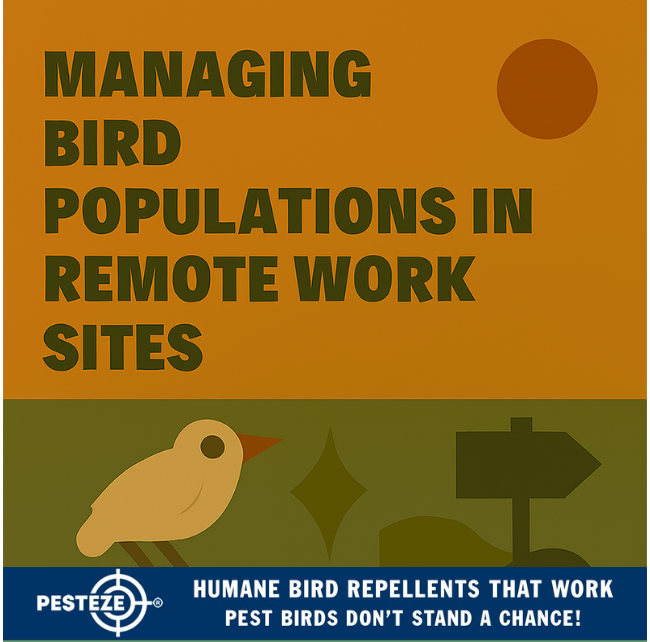MANAGING BIRD POPULATIONS IN REMOTE WORK SITES

MANAGING BIRD POPULATIONS IN REMOTE WORK SITES
SUMMARY
Bird populations in remote work sites create significant challenges for operational efficiency, equipment protection, and workplace safety in 2025.
FEATURES
- Workplace Protection: Comprehensive strategies to prevent bird-related disruptions in remote work environments.
- Equipment Safety: Methods to maintain clean, functional work infrastructure.
- Operational Continuity: Techniques to minimize bird-related interference with work activities.
- Technological Innovation: Advanced solutions for managing bird populations in isolated work settings.
- Cost-Effective Management: Strategies to minimize maintenance and productivity loss expenses.
GUIDE DESCRIPTION
Remote work sites represent complex environments that attract bird populations through multiple environmental factors. The combination of isolated locations, potential food sources, and extensive infrastructure creates ideal conditions for persistent bird challenges.
Birds are naturally drawn to remote work environments due to multiple attractive features. Abundant potential nesting locations, limited human interaction, and extensive structural features make these work sites highly appealing to various bird species. Understanding these attraction mechanisms becomes crucial for developing effective prevention strategies.
Technological innovations in 2025 provide sophisticated solutions for managing bird populations in isolated work environments. Advanced sensor systems, intelligent deterrent technologies, and targeted environmental modifications offer comprehensive protection strategies that balance operational efficiency with wildlife management.
Professional site management requires a holistic approach to bird control that addresses multiple environmental factors. Understanding local bird species, their behavioral patterns, and specific site characteristics becomes essential for developing effective intervention strategies.
Strategic remote work site protection involves multiple comprehensive approaches. Physical barriers, intelligent design modifications, ongoing maintenance protocols, and targeted deterrence techniques create systems that effectively discourage bird populations while maintaining the critical functionality of isolated work infrastructures.
- Pukhraj Sharma


Comments 0